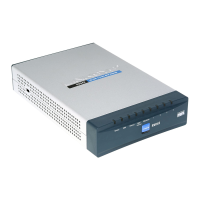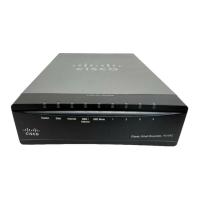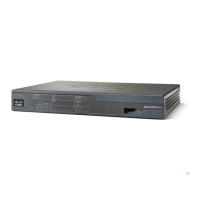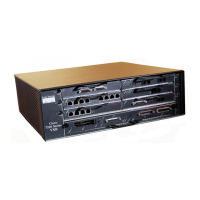Maintenance and Troubleshooting
Now that you have installed and connected the vEdge 5000 router, you can monitor and troubleshoot the
various LEDs and system alarms on the router.
Alarm Severity Levels
The system alarms on the vEdge 5000 router have two types of severity levels:
• Critical (red)—Indicates a critical situation on the router resulting from one of two conditions:
• One or more hardware components on the router has failed.
• One or more hardware components on the router has exceeded the temperature threshold
A critical alarm condition requires immediate attention. If a temperature related major alarm persists for more
than five minutes, the router will shut down.
• Major (yellow)—Indicates a warning on the router that, if left unattended, might result in an interruption
in router operation or degradation in router performance. A yellow alarm condition requires further
monitoring and/or maintenance.
Hardware Alarms
Hardware alarms on the vEdge 5000 router are predefined and are triggered by a physical condition on the
router such as a power supply failure, excessive component temperature, or fan failure. The vEdge 5000 router
triggers the following types of hardware alarms:
• Main board temperature alarm—The main board of the router has four temperature sensing points (board
sensor 1 through 4). If the temperature of the sensor location crosses the predefined threshold level, the
system triggers an alarm.
• CPU Junction temperature alarm—If the temperature of the system CPU crosses the predefined threshold
level, the system triggers an alarm.
• PIM temperature alarm—If the temperature of the PIM modules crosses the predefined threshold level,
the system triggers an alarm.
• Fan alarm—The router has modular fan trays for system cooling. The Viptela software maintains the
fans at an optimal fan speed, raising the speed as the ambient temperature increases and decreasing the
speed as the temperature decreases, to keep the router operating at the lowest possible temperature in the
green temperature threshold. If a fan stops running, the system triggers an alarm. Also if a fan starts to
run below a predefined RPM threshold, the system triggers an alarm.
• Power supply alarm—The router has two power supplies for redundancy reasons. If one of the power
supplies is not plugged in or there is a failure on a power supply input, the system triggers an alarm
Table 1 lists the yellow and red alarm threshold for the nine temperature sensing points in the system—four
board sensors spread across the board, one CPU junction temperature sensor, and two PIM temperature sensors.
The lower threshold value (Bad Fan) applies if a fan failure condition is also detected; otherwise the higher
threshold value applies (normal).
Hardware Installation Guide for vEdge Routers
243
vEdge 5000 Router
Maintenance and Troubleshooting

